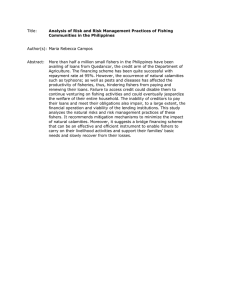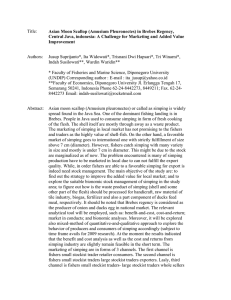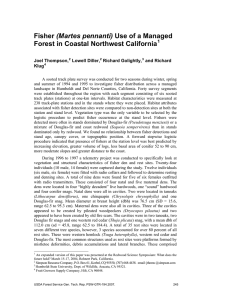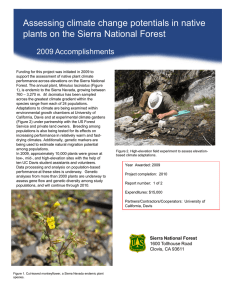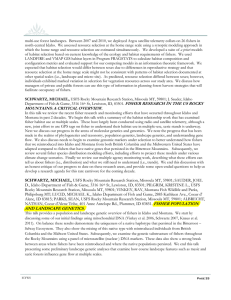U.S. Forest Service Pacific Southwest Research Station
advertisement
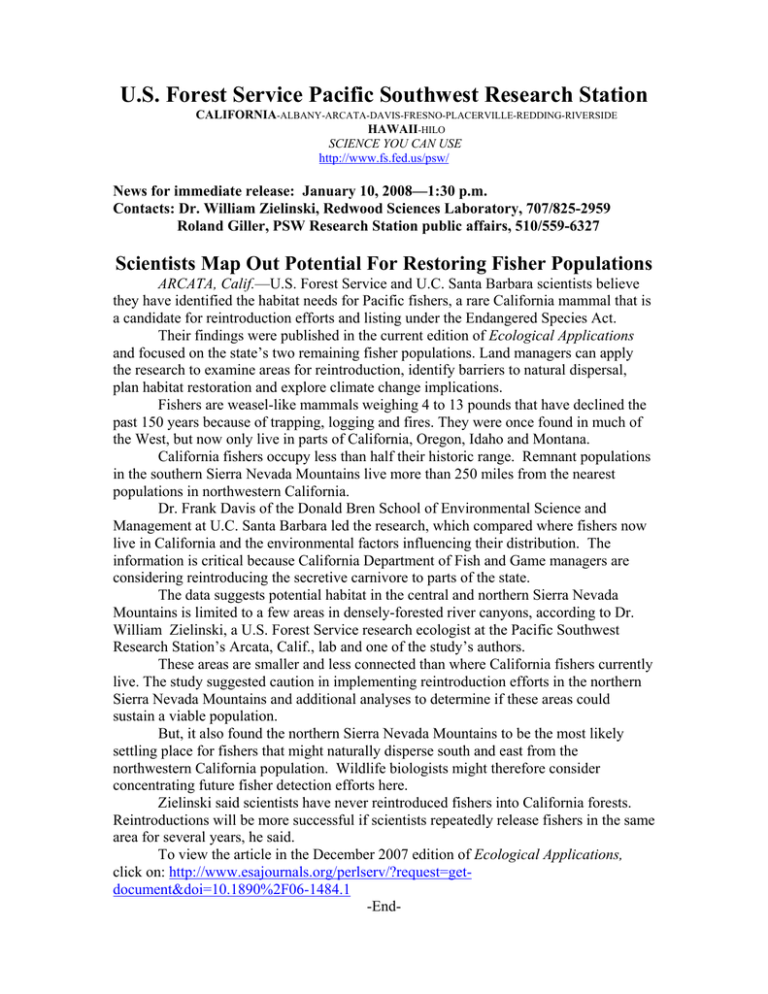
U.S. Forest Service Pacific Southwest Research Station CALIFORNIA-ALBANY-ARCATA-DAVIS-FRESNO-PLACERVILLE-REDDING-RIVERSIDE HAWAII-HILO SCIENCE YOU CAN USE http://www.fs.fed.us/psw/ News for immediate release: January 10, 2008—1:30 p.m. Contacts: Dr. William Zielinski, Redwood Sciences Laboratory, 707/825-2959 Roland Giller, PSW Research Station public affairs, 510/559-6327 Scientists Map Out Potential For Restoring Fisher Populations ARCATA, Calif.—U.S. Forest Service and U.C. Santa Barbara scientists believe they have identified the habitat needs for Pacific fishers, a rare California mammal that is a candidate for reintroduction efforts and listing under the Endangered Species Act. Their findings were published in the current edition of Ecological Applications and focused on the state’s two remaining fisher populations. Land managers can apply the research to examine areas for reintroduction, identify barriers to natural dispersal, plan habitat restoration and explore climate change implications. Fishers are weasel-like mammals weighing 4 to 13 pounds that have declined the past 150 years because of trapping, logging and fires. They were once found in much of the West, but now only live in parts of California, Oregon, Idaho and Montana. California fishers occupy less than half their historic range. Remnant populations in the southern Sierra Nevada Mountains live more than 250 miles from the nearest populations in northwestern California. Dr. Frank Davis of the Donald Bren School of Environmental Science and Management at U.C. Santa Barbara led the research, which compared where fishers now live in California and the environmental factors influencing their distribution. The information is critical because California Department of Fish and Game managers are considering reintroducing the secretive carnivore to parts of the state. The data suggests potential habitat in the central and northern Sierra Nevada Mountains is limited to a few areas in densely-forested river canyons, according to Dr. William Zielinski, a U.S. Forest Service research ecologist at the Pacific Southwest Research Station’s Arcata, Calif., lab and one of the study’s authors. These areas are smaller and less connected than where California fishers currently live. The study suggested caution in implementing reintroduction efforts in the northern Sierra Nevada Mountains and additional analyses to determine if these areas could sustain a viable population. But, it also found the northern Sierra Nevada Mountains to be the most likely settling place for fishers that might naturally disperse south and east from the northwestern California population. Wildlife biologists might therefore consider concentrating future fisher detection efforts here. Zielinski said scientists have never reintroduced fishers into California forests. Reintroductions will be more successful if scientists repeatedly release fishers in the same area for several years, he said. To view the article in the December 2007 edition of Ecological Applications, click on: http://www.esajournals.org/perlserv/?request=getdocument&doi=10.1890%2F06-1484.1 -End-
